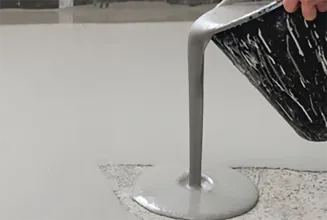
Dec . 03, 2024 16:32 Back to list
hpmc tile adhesive
Understanding HPMC Tile Adhesive A Comprehensive Guide
In the world of construction and tiling, the choice of materials plays a crucial role in ensuring quality, durability, and aesthetic appeal. One such material that has gained significant traction in recent years is Hydroxypropyl Methylcellulose (HPMC) tile adhesive. This article delves into the composition, benefits, application, and maintenance of HPMC tile adhesive, providing a comprehensive understanding of why it has become a preferred choice in various construction projects.
What is HPMC?
Hydroxypropyl Methylcellulose (HPMC) is a semi-synthetic polymer derived from cellulose, a natural polymer found in the cell walls of plants. The chemical modification of cellulose through hydroxypropyl and methyl groups results in a versatile compound that is soluble in water and possesses a range of properties beneficial for use in construction materials, particularly tile adhesives.
The Composition of HPMC Tile Adhesive
HPMC tile adhesive is a combination of HPMC powder, cement, and various fillers that enhance its bonding properties. The presence of HPMC in tile adhesives improves their workability, allows for extended open time, and enhances the adhesive's adhesion strength. When mixed with water, it forms a paste that adheres firmly to both the substrate and the tiles, ensuring a strong and durable bond.
Benefits of HPMC Tile Adhesive
1. Enhanced Workability One of the standout features of HPMC tile adhesive is its excellent workability. The adhesive can be easily spread and manipulated, making the tiling process more efficient for installers.
2. Improved Adhesion HPMC has unique properties that enhance the adhesion between tiles and various substrates like concrete, cement boards, and wooden surfaces. This ensures that tiles remain securely in place, reducing the risk of cracking or detachment over time.
3. Extended Open Time The open time refers to the period within which the adhesive remains workable after application. HPMC tile adhesive offers extended open time, allowing installers the flexibility to reposition tiles without compromising the effectiveness of the adhesive.
4. Water Resistance Tile installations are often exposed to moisture, making water resistance a crucial factor. HPMC tile adhesive provides a reliable barrier against water infiltration, preventing damage to the substrate and prolonging the longevity of the installation.
5. Eco-Friendliness Being derived from natural cellulose, HPMC is considered environmentally friendly. It is non-toxic and meets various environmental standards, making it a preferred choice for sustainable construction projects.
hpmc tile adhesive

Application of HPMC Tile Adhesive
Applying HPMC tile adhesive is straightforward, but certain steps must be followed to ensure optimal results
1. Surface Preparation Before application, ensure that the substrate is clean, dry, and free from dust, grease, or any debris. Proper surface preparation is critical for achieving a strong bond.
2. Mixing HPMC tile adhesive is typically available in powder form and needs to be mixed with water according to the manufacturer's instructions. Achieving the right consistency is vital, as too much water can weaken the adhesive.
3. Application Using a notched trowel, apply the adhesive to the prepared surface. The depth and angle of the trowel will determine the amount of adhesive applied and the bonding strength.
4. Laying the Tiles After applying the adhesive, lay the tiles within the open time specified by the manufacturer. Ensure proper alignment and pressing to eliminate air pockets that can affect adhesion.
5. Curing Allow the adhesive to cure for the recommended time before grouting or exposing the installation to moisture.
Maintenance and Longevity
To maintain the integrity of a tiled surface, regular inspections are recommended. Promptly repair any tiles that show signs of detachment or damage. Additionally, using appropriate cleaning products can help preserve the surface finish and prolong the life of both the tiles and the adhesive.
Conclusion
HPMC tile adhesive is revolutionizing the tiling industry due to its unique properties and benefits. Its enhanced workability, improved adhesion, and eco-friendliness make it a top choice for both professional installers and DIY enthusiasts. By understanding how to properly use and maintain HPMC tile adhesive, you can ensure a durable and visually appealing finish for any tiling project. Whether you’re renovating a home or completing a larger construction task, HPMC tile adhesive stands out as an effective solution for ensuring quality and longevity in tiled surfaces.
-
Versatile Hpmc Uses in Different Industries
NewsJun.19,2025
-
Redispersible Powder's Role in Enhancing Durability of Construction Products
NewsJun.19,2025
-
Hydroxyethyl Cellulose Applications Driving Green Industrial Processes
NewsJun.19,2025
-
Exploring Different Redispersible Polymer Powder
NewsJun.19,2025
-
Choosing the Right Mortar Bonding Agent
NewsJun.19,2025
-
Applications and Significance of China Hpmc in Modern Industries
NewsJun.19,2025







